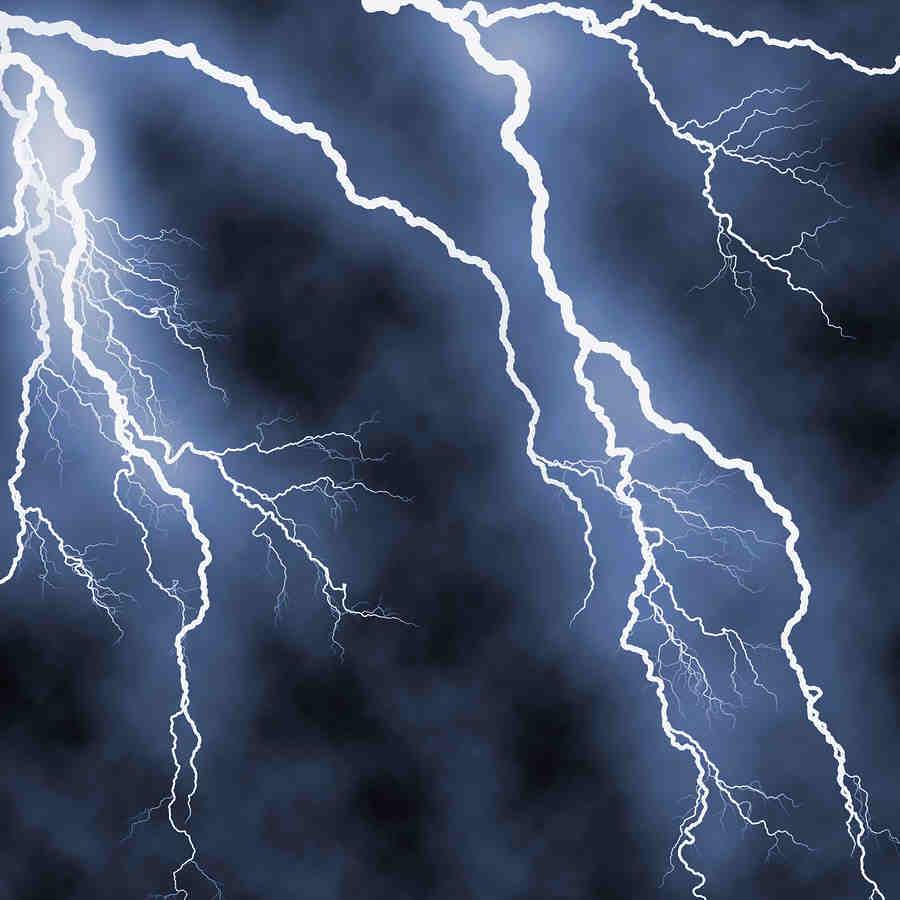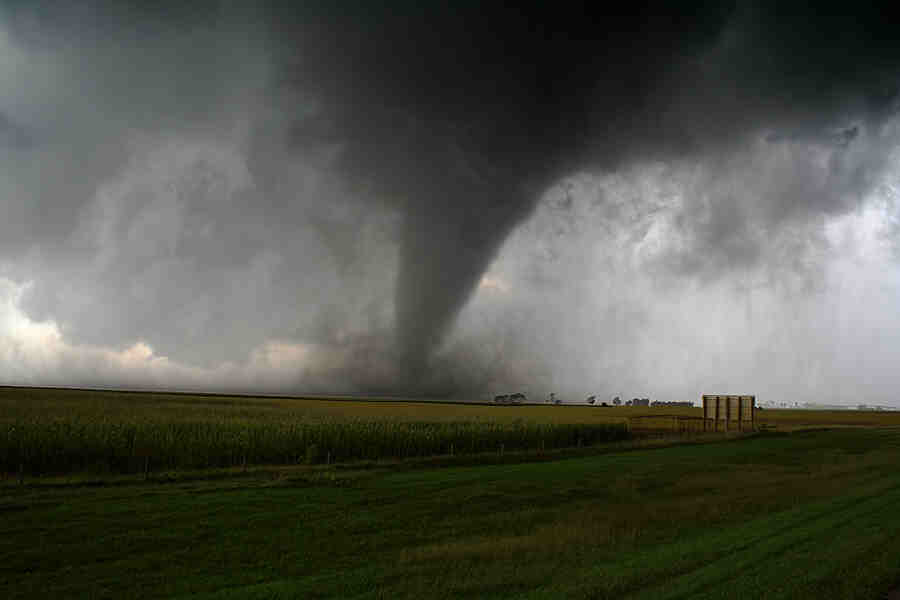THE DISASTER WARNING NETWORK SYSTEM OPERATION - GENERAL DESCRIPTION
 CLICK HERE FOR A COMPLETE
GRAPHICAL VIEW OF THE SYSTEM OPERATION
CLICK HERE FOR A COMPLETE
GRAPHICAL VIEW OF THE SYSTEM OPERATION
 The
Disaster Warning Network is a patented communication system that
provides advanced warnings of disasters such
as tornadoes, earthquakes, lightning storms, tsunami, and local
flooding. It will also provide early warnings of manmade disasters
such as chemical or biological accidents and spills. The Disaster
Warning Network provides early warning information to system users
allowing maximum time for effective human or automated responses
to minimize damage to lives and property. The
Disaster Warning Network is a patented communication system that
provides advanced warnings of disasters such
as tornadoes, earthquakes, lightning storms, tsunami, and local
flooding. It will also provide early warnings of manmade disasters
such as chemical or biological accidents and spills. The Disaster
Warning Network provides early warning information to system users
allowing maximum time for effective human or automated responses
to minimize damage to lives and property.
The Disaster
Warning Network has three distinct operational phases
A) DETECTION
The Network detection technology continuously identifies and
confirms in real time, the location, speed, and magnitude of various
disasters. It then provides continuous transmission
of information about the disasters to a Central Processing Site
for ANALYSIS.
 The
DETECTION phase of the Network in each geographic area relies on
various "area appropriate" detection methods. When appropriate,
detection and sensing capabilities are to be performed on a regional
basis with currently in-place technologies. These capabilities may/will
need to be supplemented with DWN equipment. Land based Doppler radar,
lightning sensors, tri-axial accelerometers (seismometers), rainfall
monitoring sensors, ocean buoys and various other sensing devices
are to be utilized for detection and sensing of disasters. The
DETECTION phase of the Network in each geographic area relies on
various "area appropriate" detection methods. When appropriate,
detection and sensing capabilities are to be performed on a regional
basis with currently in-place technologies. These capabilities may/will
need to be supplemented with DWN equipment. Land based Doppler radar,
lightning sensors, tri-axial accelerometers (seismometers), rainfall
monitoring sensors, ocean buoys and various other sensing devices
are to be utilized for detection and sensing of disasters.
Each geographic area will have appropriate detection and sensing
equipment that includes the following:
-
 Sensors
and detectors for continuously determining the location, speed,
and magnitude of various disasters that are likely to occur
in that geographic area. Sensors
and detectors for continuously determining the location, speed,
and magnitude of various disasters that are likely to occur
in that geographic area.
- Transmitters for sending continuous real time information
about disasters in progress to a Central Processing Site for
real time ANALYSIS.
B) ANALYSIS
A Central Processing Site performs the ANALYSIS phase of the
Network in each area.
The first function of the analysis phase is to continuously analyze
information from all detection and sensing sources in that geographic
area and to determine the nature and degree of a threat to lives
and property.
The second function of the analysis phase is to determine which
geographic areas will be impacted by disasters in progress, which
specific users should be warned, and to issue warning instruction
signals to network users.
To accomplish these functions the Central Processing Site includes
the following:
- A receiver for information signals sent from all detector
and sensing sources regarding natural disasters.
- A computer system with automated pattern analyzers to provide
analysis of the information signals from the detector and sensing
sources, and to confirm the location, magnitude, and movement
speed of a natural disaster in real time.
- A continuously updated network user information database
to determine location and other appropriate geographic information
about each system user.
- A transmitter to send continuously upgraded warning alert
instructions to those Network users in immediate danger from
the disaster based on all information in the Central Processing
system.
C) WARNING
The WARNING phase is initiated by the central processing site
when it sends encoded instruction signals to network users in danger
from an existing disaster. Only those specific areas and specific
users that are predicted by the Network to be impacted by the disaster
event will receive warning signals.
Among the disasters that are detected on a regional basis from the
detection and sensing sources are tornadoes, earthquakes, tsunami,
lightning storms, and area wide flooding. Also included will be
the many types of manmade disasters caused by chemical or biological
accidents.
The Disaster Warning Network utilizes patented technology to "localize"
the warning signals so that early warnings are sent to only those
users that are in actual danger. This greatly reduces the occurrence
of false alarms and increases the confidence level of those receiving
the warning signals.
Continuous warning signals are sent to users as follows:
- Signals are received by Audible Warning devices specifically
designed to be always active (on) and provide audible warning.
Some examples would be disaster warning sirens, emergency disaster
radios, and other types of audible warning alarms.
- Signals are received by devices specifically designed to
provide an audible or visible warning if equipped with appropriate
embedded technology designed to receive the warning signals.
Some examples would be radios, televisions, pagers, message
watches, and cell phones.
- Signals are received by all types of ancillary equipment
equipped with appropriate embedded technology to receive the
warning signals, and pre-programmed to perform automated functions
based on receipt of the signals. Some examples would be control
or shutdown of computer systems, fuel shutoffs, emergency exits
and lighting systems, redundant power supplies, transportation
systems, and electrical transmission systems.
An unlimited variety of common consumer and commercial devices
will be equipped with embedded microprocessor receiver/controllers
for performing various warning and control functions needed to minimize
the effects of a disaster on lives and property.
Some warning signals will produce an audible warning that will prompt
a human response by those in hearing range to take appropriate action
in advance of an impending disaster to avoid loss of property or
life. A few of the many diverse benefits to users are as follows:
- Advanced warning alarms in homes, schools, workplaces, and
public facilities.
- Advanced warning alerts on cell phones, pagers, and a wide
variety of other communication devices in common usage.
- Automatic activation of radios and televisions to provide
warning alerts.
Some warning signals will be received by various types of ancillary
equipment that will prompt a preprogrammed automated response by
the equipment receiving the signal. A few of the many types of these
active responses that will benefit users are as follows:
- Automatic opening of entrances to emergency shelters in
office buildings, public facilities and mobile home parks.
- Activation of traffic warning signals at bridges and intersections.
- Automatic control of computer systems to avoid damage and
loss of data.
- Activation of emergency lighting and generators at public
safety facilities, hospitals and nursing homes.
- Provide more time for emergency rescue teams, and hospitals
to prepare emergency procedures.
SUMMARY
In summary, the Disaster Warning Network will detect and analyze
most types of disasters as they first occur. The Network will automatically
perform real time analysis of these disaster events. And, when disasters
do occur, the Network will issue advanced early warnings only to
area specific populations who are likely to be impacted by the disaster
event.
The Network provides localized area warnings, through a wide variety
of commonly used electronic devices, with high informational content,
and in real time. No other disaster warning network in mankind’s
history has accomplished these tasks or will achieve these benefits
for an entire population using such a wide variety of warning mechanisms.
The Network’s immediate and accurate warnings offer more time for
individuals to take appropriate actions in the event of disasters.
It also provides those individuals a higher degree of certainty
regarding the necessity of those actions. And of great importance,
the Network offers a means to automate protective responses to disasters
by a wide variety of ancillary products in common usage.
Global implementation and usage of this network will result in a
significant saving of lives and a widespread reduction of injuries
and property damages during disasters.
 CLICK HERE FOR A COMPLETE
GRAPHICAL VIEW OF THE SYSTEM OPERATION
CLICK HERE FOR A COMPLETE
GRAPHICAL VIEW OF THE SYSTEM OPERATION

|
